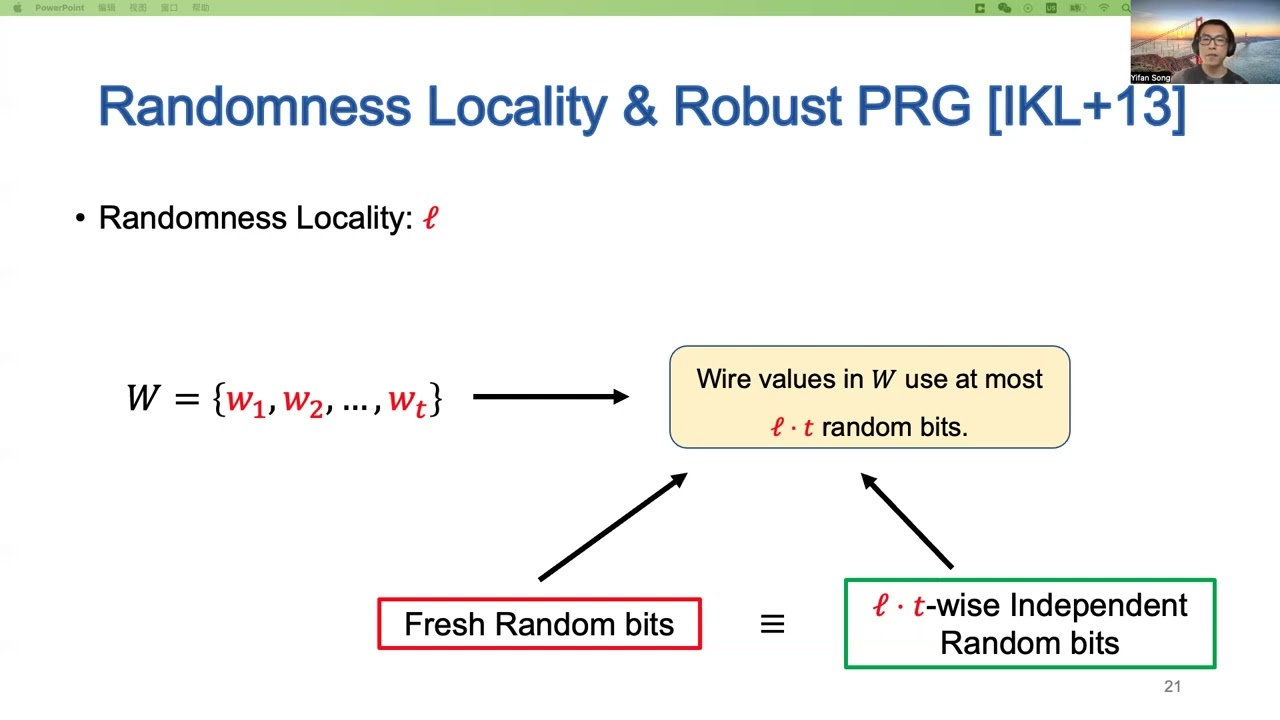Welcome to the resource topic for 2022/250
Title:
Private Circuits with Quasilinear Randomness
Authors: Vipul Goyal, Yuval Ishai, Yifan Song
Abstract:A t-private circuit for a function f is a randomized Boolean circuit C that maps a randomized encoding of an input x to an encoding of the output f(x), such that probing t wires anywhere in C reveals nothing about x. Private circuits can be used to protect embedded devices against side-channel attacks. Motivated by the high cost of generating fresh randomness in such devices, several works have studied the question of minimizing the randomness complexity of private circuits. The best known upper bound, due to Coron et al. (Eurocrypt 2020), is O(t^2\cdot\log ts) random bits, where s is the circuit size of f. We improve this to O(t\cdot \log ts), including the randomness used by the input encoder, and extend this bound to the stateful variant of private circuits. Our constructions are semi-explicit in the sense that there is an efficient randomized algorithm that generates the private circuit C from a circuit for f with negligible failure probability.
ePrint: https://eprint.iacr.org/2022/250
Talk: https://www.youtube.com/watch?v=bYVYu_NTrUY
Slides: https://iacr.org/submit/files/slides/2022/eurocrypt/eurocrypt2022/186/slides.pptx
See all topics related to this paper.
Feel free to post resources that are related to this paper below.
Example resources include: implementations, explanation materials, talks, slides, links to previous discussions on other websites.
For more information, see the rules for Resource Topics .
